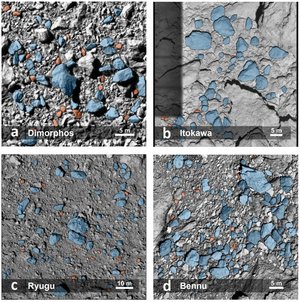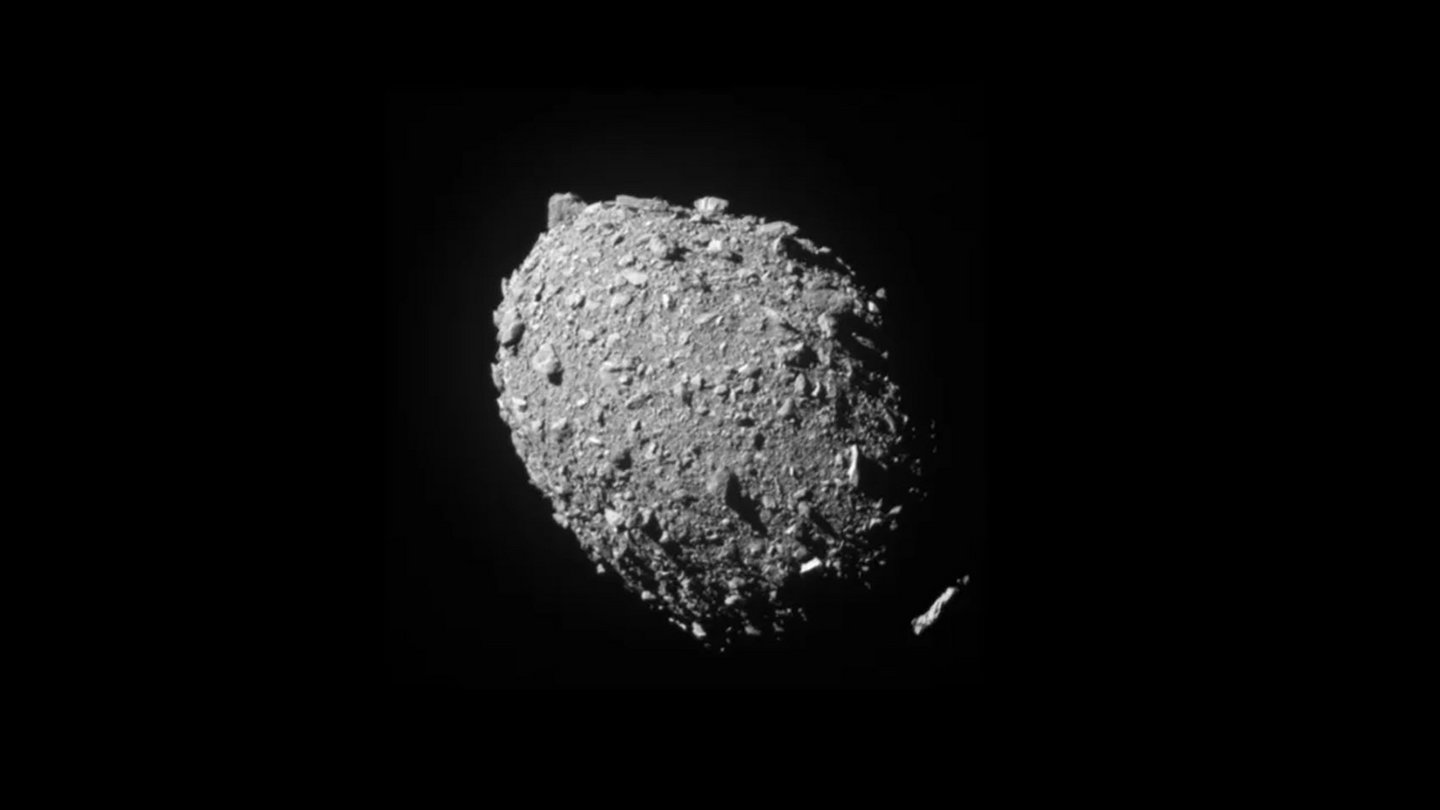In 2022, NASA deliberately crashed a space probe into the asteroid Dimorphos to specifically change its orbit. Researchers took advantage of the opportunity to collect additional data on the asteroid and its larger companion Didymos. Several research groups have now evaluated the data and learned more about the physical and geological properties of the double asteroid. As reported in five scientific papers in the specialized journal Nature Communications, the two celestial bodies are similar to the asteroids Ryugu and Bennu.
Astronomers with the DART mission successfully deflected a near-Earth asteroid from its orbit for the first time about two years ago. The double asteroid system, made up of Didymos and its moon Dimorphos, never threatened to collide with Earth. But the mission showed that it is possible to protect Earth from dangerous asteroid impacts.
However, the spacecraft wasn’t just used to deflect the asteroid from its orbit. Instead, a lot of data was collected about these two celestial bodies. To do this, researchers used the spacecraft itself and something called a cubesat. This small, shoebox-sized satellite was deployed shortly before DART hit and took images of both the impact and its aftermath.
Didymos is much older than its moon.

Different asteroid surfaces
These data have now been analyzed in detail by various research groups. Among other things, rocks and craters on both asteroids indicate that Didymos, estimated to be 12.5 million years old, is much older than Dimorphos, which is about 0.3 million years old. The researchers suspect that Dimorphos formed from material that Didymos shed as it rotated.
Both asteroids are called rubble pile asteroids, cosmic piles of debris made up of individual rocks held together only loosely by gravity. The rocks on the surface are similar to those on other asteroids like Ryugu or Bennu. Researchers say this is an indication of a common history of formation.
Astronomers also analyzed Didymos' carrying capacity. They wanted to know how much load the surface could support. The carrying capacity of the large asteroid, 780 meters across, is at least 1,000 times less than that of dry sand on Earth.
For future missions, it is important to know as precisely as possible about near-Earth asteroids and their formation history – especially when it comes to preventing an asteroid from impacting Earth should the worst happen. Data from the DART mission provide a first look at the properties of Didymos and Dimorphos. ESA’s Hera mission aims to provide more detailed information. It is expected to fly back to the double asteroid in October 2024 with more precise measuring instruments on board.

“Social media evangelist. Baconaholic. Devoted reader. Twitter scholar. Avid coffee trailblazer.”








More Stories
Longest jets in the universe discovered – giant particle streams as long as 140 Milky Way galaxies in a row
New method reveals 307 supernova remnants
Snapchat is upping the ante on augmented reality glasses